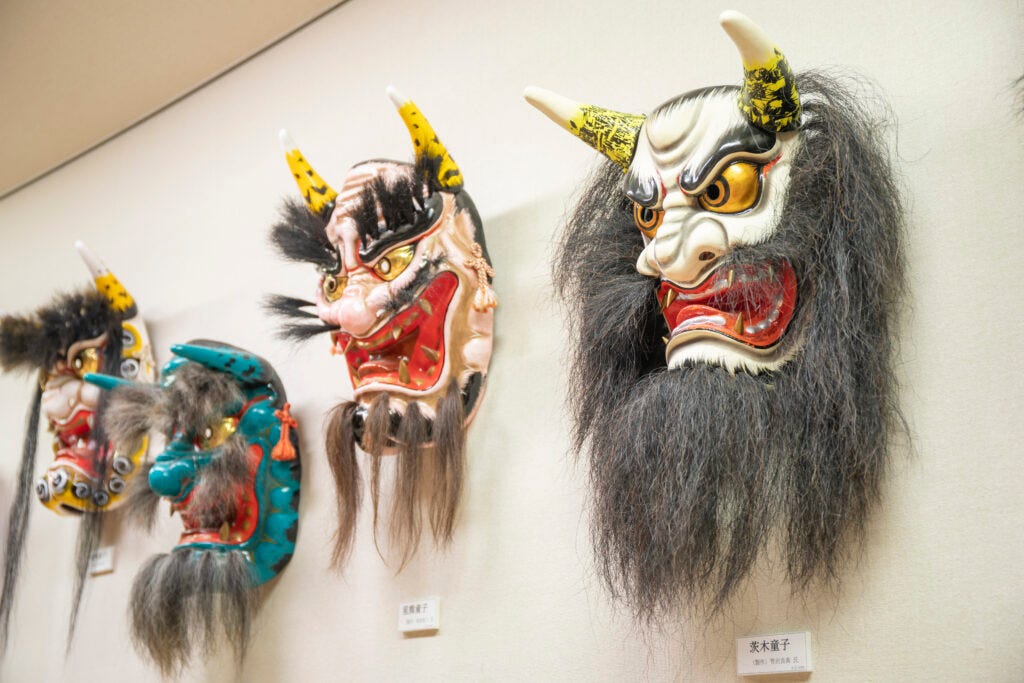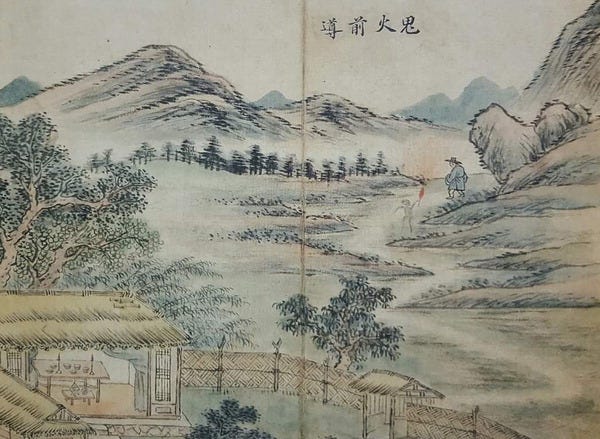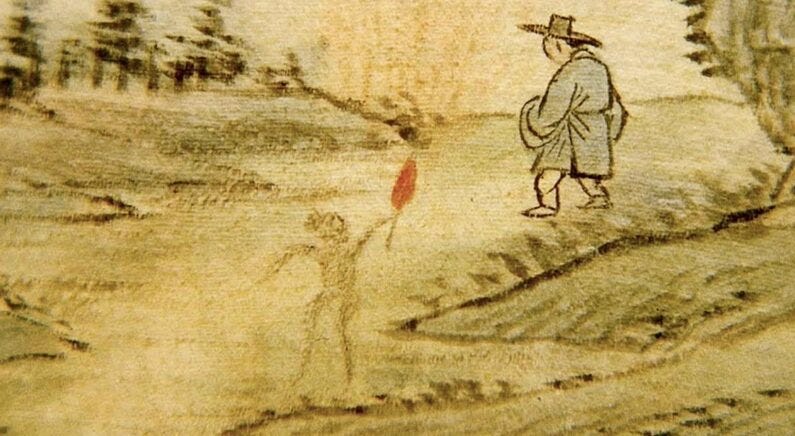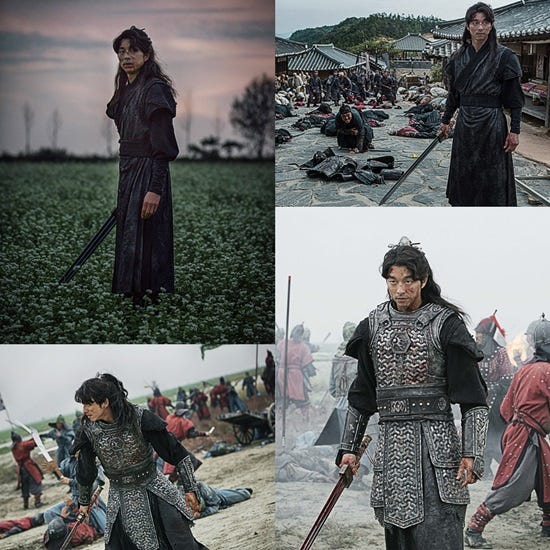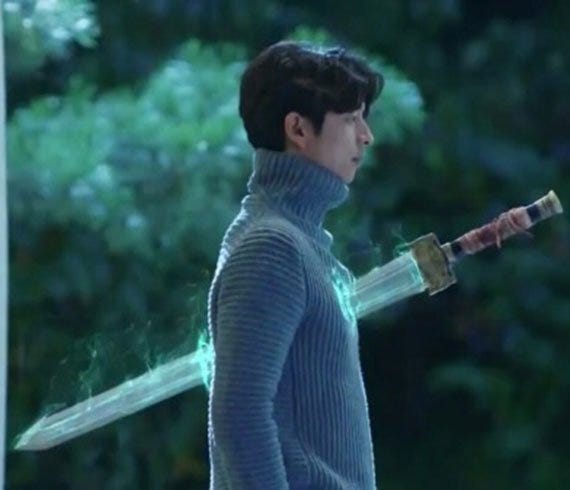Dokkaebi, a Korean Mythical Creature
How do you translate words like Goblin? Or, a Banshee? Leprechaun? Just as these prototypically unique names of folklore are untranslatable, the Korean dokkaebi (도깨비) is also.
Many of you may have already been exposed to this word because of one hugely popular K-drama of the same name, Dokkaebi, that came out in 2016. It’s one of the very few K-dramas that I watched from the beginning to the end. I’ve seen two different English titles for this one—Goblin, and Guardian.
Gong Yoo (공유, seated, suit and a black tie) plays the protagonist dokkaebi, and as you can see, he looks nothing like the cartoonish character you imagine them to be, often portrayed like this, with horn(s) and always carrying a spiked club.
This image of Korean dokkaebi, however, is a remnant of the Japanese occupation era 100 years ago, for the look is modeled after the oni, a similar mythical character in Japanese folklore that looks something like this.
It’s a bit ridiculous to even consider what a dokkaebi might look like—I mean, how do you know something that’s a complete figment of imagination looks like? Besides, the oral tradition tells us that dokkaebi is a shape shifter. So why even bother?
What exactly is a dokkaebi? It is probably the most frequently mentioned unnatural being in the Korean folklore, and there are tons of them, including some doozies. Some are well-known, like the Nine-tailed fox called 구미호 (goo-mi-ho). This particular being shows up in the Chinese and Japanese folklore as well, all with similar characteristics. If you’re a K-drama aficionado, you might have also heard of this name—it’s been made into at least 5 or 6 different drama series.
Getting back to dokkaebi, there is no one all-encompassing description of what it is. Sometimes it’s described as a demi-god that can influence the weather with a swing of his club (it is understood that it takes the form of a strapping and rough looking male), and other times it is believed to be a low-class servant-god, or a hand of a higher-ranking deity, that turns rocks into gold and other valuable objects, again only with a swing of his club.
Counterintuitively, dokkaebi more often than not is portrayed as an auspicious being that brings good things for people.
bestows upon just people wealth and good fortunes while striking down on the wicked.
brings food to those who worship him
makes smart people smarter and more capable
And it is also known to;
walk through or jump over doors, walls, and fences
teleport instantaneously to remote locations
when witnessing evil deeds by people, will punish them
But most of all, dokkaebi is described as a mischievous being that craves attention from people and likes to play with them. A shape shifter that dokkaebi is, he will turn himself into a man and frequently ask the passersby to a match of ssi-rm (씨름), Korean wrestling that’s sort of like the Japanese sumo.
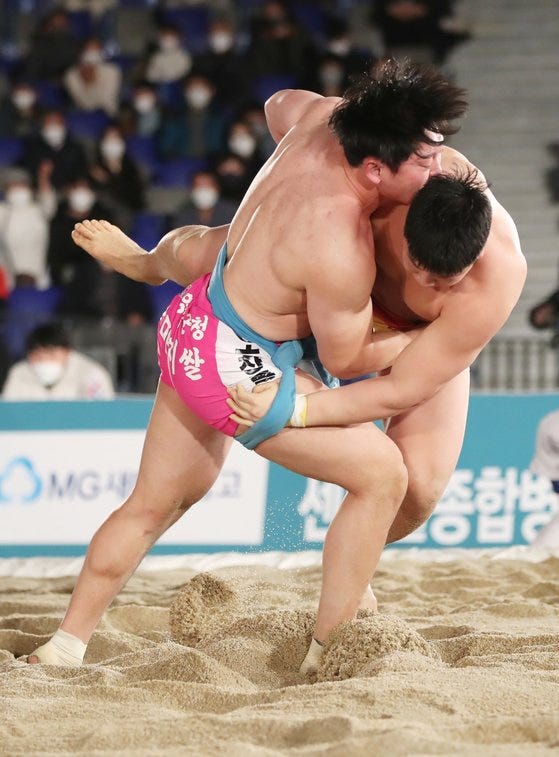
The weird and funny part about the legend is that the dokkaebi will never fall—he never uses his superpowers during the match and loses from time to time—by tripping his right leg, but he will fall when you trip him with his left leg. The truly strange part about this is that it somehow ties in with the Western etymology with the word “sinister,” meaning “left.”
Anyway, the most popular version of the tale is that when dokkaebi loses the ssi-rm match with a stranger, the punishment is for him to be tied to a tree and having to spend overnight there. When the man who beats dokkaebi returns to the tree next morning, he only finds a broomstick tied to the tree where he left dokkaebi.
Again, strange connection between the Korean “broomstick” reference being an object of myth and the Western tradition of it being intertwined with the world of wizardry and Hogwarts.
Let’s turn our attention to the popular K-drama of the same name. The main dokkaebi character (I’m going to omit wholly about the secondary main character the Grim Reaper and save it for another day) is an incarnation of Kim Shin (fictional name), an army general during the Goryeo dynasty who is supposedly 939 years old when the drama was aired in 2016.
The Kim Shin army general character is based on a real historical figure named Cheok Joon-gyong (척준경) whose birth year is unknown but should be about the same age as the fictional Kim Shin character.
Cheok (pronounced as “Chuck” and the last name no longer exists in Korea) is thought to have been the strongest individual fighter in all of Korean military history. Stories written about him are legendary in terms of his triumphs, overcoming the most incredible odds, but he isn’t a household name when it comes to history books. Risen from the lowest military ranks and having won 100% of the battles he was involved in, Cheok was eventually promoted to the highest military office. But his story is mostly shunned in the textbooks because later in his life he was accused of being an accomplice to a military coup attempt to overthrow the sitting King at the time and was incarcerated. This background story of Cheok Joon-gyong’s life as a traitor sort of coincides with how Kim Shin in the K-drama is portrayed in the first episode of Dokkaebi.
From there, the writer uses her imagination and melds two separate myth/stories into a dramatic sequence of events, which I thought was interesting.
As you (re)watch the drama with this information, you can compare the plot with these factoids. One version of how the real historical dokkaebi came into being tells us that it originates from the Korean god of war Chi-woo-cheon-wang (치우천왕) whereas Kim Shin is supposed to be real-life god of war (having never lost a battle) during the Goryeo dynasty, fashioned after Cheok Joon-gyong.
Also, there is a belief that a dokkaebi is created when an old object such as a common broomstick comes in contact with human blood. Compare that to Kim Shin’s sword that’s seen a lot of blood in its day.
A real dokkaebi can transform itself to flame, whereas when Kim Shin gets really angry, his body is engulfed in bluish flame.
As mentioned above, a real dokkaebi punishes the wicked and helps those in desperate need, and Kim Shin… well, watch the drama.
Another version of the folklore says that when a real dokkaebi cries, it rains. And you know what happens in the drama when Kim Shin is sad or happy about something.
Again, as stated above, a dokkaebi has the ability to turn things into gold with a swing of his club, whereas Kim Shin has the ability to predict the winning lotto numbers.






